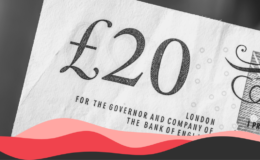- There are several different measures of real-terms wage changes
- One official measure showed wages fell by 3.7% in the three-months up to and including May – not the few months afterwards
- Mr Kearney got the dates wrong but was correct that wages are shrinking
On August 3 during an Assembly debate on the election of a new speaker, Sinn Fein MLA Declan Kearney said:
“Inflation is rising at a rate not seen in more than 40 years – and, indeed, the worst is yet to come. At present, workers and families are suffering and struggling to pay their bills. Workers’ wages have decreased by 3.7% on average from May. There is every indication that the cost-of-living crisis is heading in the direction of a recession.”*
This is incorrect, We asked Mr Kearney to clarify where he got these figures from but he didn’t respond.
However, there was a recent fall in UK wages, just not over the time identified by the MLA.
There are several different ways to measure inflation and several different ways to measure real-terms changes in wages.
Official figures show that, by one of these measures, real-terms wages in the UK fell by 3.7% in the three months to May – i.e. in March, April and May, rather than May, June and July, as suggested by the MLA.
For this reason, his claim is inaccurate, although this inaccuracy is down to the dates he referenced and the wider point about falling wages still holds water.
Real terms
Real-terms measures of the growth – or decline – of wages looks at how much pay packets have changed in absolute terms while also taking inflation into account.
This is important because if, for example, someone gets a 2% raise but their cost of living rises by 10%, they are actually less well off.
There are several ways to measure inflation. The Bank of England’s current target measure is the Consumer Price Index (CPI), which uses a weighted balance of price changes for consumer goods and services.
However, the ONS prefers the Consumer Price Index with Housing Costs (CPIH), which is the same as the CPI except that it also accounts for changes in housing costs.
Both CPI and CPIH can be used to calculate how average wages change over time, in real terms. Comparisons are usually seasonally adjusted.
Broadly, this means that wages from a given point in one year are compared to wages from 12 months earlier, factoring in inflation, to get a truly representative measure of effective pay rises or falls.
Figures
On 19 July, the ONS published its seasonally-adjusted, real-terms wage measures for the period up to May 2022.
Accounting for CPI, the ONS found that regular pay had declined by 3.9% in May, year on year, while the three-month rolling average showed a 3.7% decline, year on year.
This final figure may well be where Mr Kearney got his figure of a 3.7% drop in wages (it was a widely-reported statistic, see for example this report from Sky News).
However, he was inaccurate in claiming that this reduction covered the period from May until the start of August.
The ONS also found that total pay (which differs from regular pay by including bonuses) was down 4.5% in May, year on year, while showing a drop of 1.9% using the three month average.
As a comparison, on the same day the ONS published wage growth figures using CPIH, which showed single-month wage declines of 3.5% (total pay) and 2.9% (regular pay) for May 2022.
New figures
On August 16 – almost two weeks after Mr Kearney made his claim – the ONS published its latest figures on seasonally-adjusted wages.
These found that, when factoring in CPI, in the period from April to June 2022 regular wages fell by 4.1% and total wages were down 3.6%, compared to the same period in 2021 – so, larger percentage falls than in the three months to May.
When accounting for CPIH, these falls were 3.0% for regular pay and 2.5% for total.
*Please note, Mr Kearney spoke in Irish and this is the official Hansard translation into English. His words were:
“Tá boilsciú ag dul in airde ag luas nach bhfacthas le breis agus daichead bliain – agus leoga, tá níos measa le teacht. San am i láthair, tá oibrithe agus teaghlaigh ag fulaingt agus ag streachailt lena gcuid billí a íoc. Tá laghdú 3·7% ar an mheán ar thuarastal oibrithe ó mhí na Bealtaine. Tá gach cuma ar an scéal go bhfuil an ghéarchéim costais maireachtála seo ag dul i dtreo cúlú eacnamaíochta.”




